Gereziher Adhane
On Explaining Knowledge Distillation: Measuring and Visualising the Knowledge Transfer Process
Dec 18, 2024
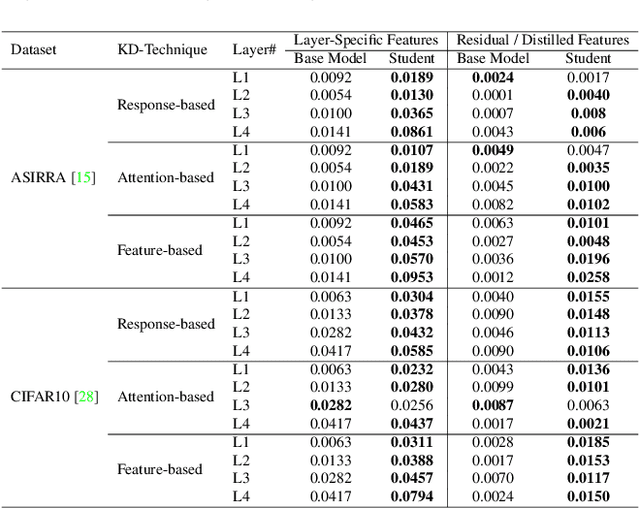
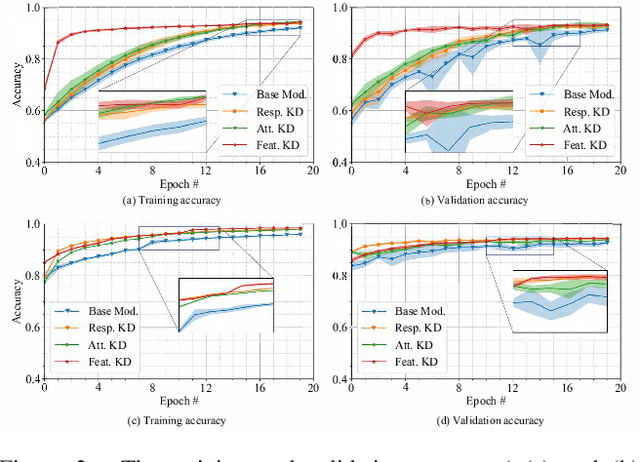

Abstract:Knowledge distillation (KD) remains challenging due to the opaque nature of the knowledge transfer process from a Teacher to a Student, making it difficult to address certain issues related to KD. To address this, we proposed UniCAM, a novel gradient-based visual explanation method, which effectively interprets the knowledge learned during KD. Our experimental results demonstrate that with the guidance of the Teacher's knowledge, the Student model becomes more efficient, learning more relevant features while discarding those that are not relevant. We refer to the features learned with the Teacher's guidance as distilled features and the features irrelevant to the task and ignored by the Student as residual features. Distilled features focus on key aspects of the input, such as textures and parts of objects. In contrast, residual features demonstrate more diffused attention, often targeting irrelevant areas, including the backgrounds of the target objects. In addition, we proposed two novel metrics: the feature similarity score (FSS) and the relevance score (RS), which quantify the relevance of the distilled knowledge. Experiments on the CIFAR10, ASIRRA, and Plant Disease datasets demonstrate that UniCAM and the two metrics offer valuable insights to explain the KD process.
ADVISE: ADaptive Feature Relevance and VISual Explanations for Convolutional Neural Networks
Mar 02, 2022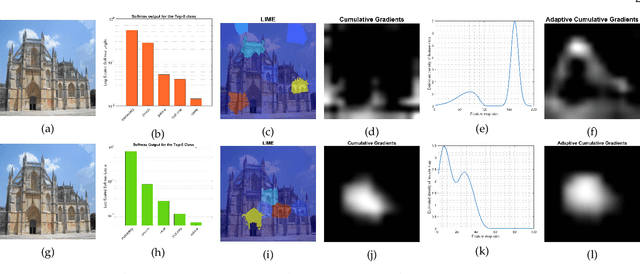
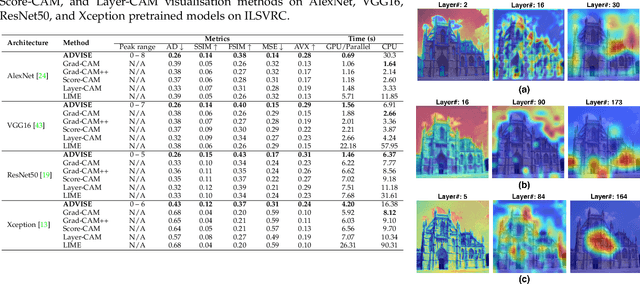
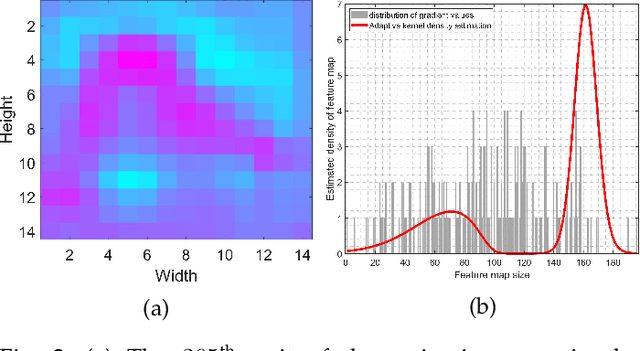
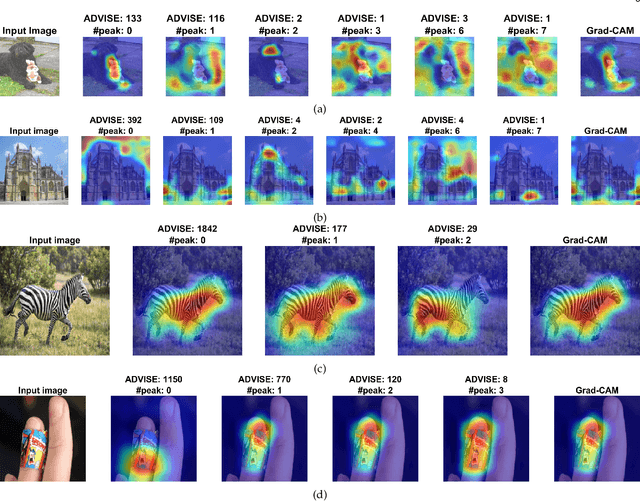
Abstract:To equip Convolutional Neural Networks (CNNs) with explainability, it is essential to interpret how opaque models take specific decisions, understand what causes the errors, improve the architecture design, and identify unethical biases in the classifiers. This paper introduces ADVISE, a new explainability method that quantifies and leverages the relevance of each unit of the feature map to provide better visual explanations. To this end, we propose using adaptive bandwidth kernel density estimation to assign a relevance score to each unit of the feature map with respect to the predicted class. We also propose an evaluation protocol to quantitatively assess the visual explainability of CNN models. We extensively evaluate our idea in the image classification task using AlexNet, VGG16, ResNet50, and Xception pretrained on ImageNet. We compare ADVISE with the state-of-the-art visual explainable methods and show that the proposed method outperforms competing approaches in quantifying feature-relevance and visual explainability while maintaining competitive time complexity. Our experiments further show that ADVISE fulfils the sensitivity and implementation independence axioms while passing the sanity checks. The implementation is accessible for reproducibility purposes on https://github.com/dehshibi/ADVISE.
A deep convolutional neural network for classification of Aedes albopictus mosquitoes
Oct 29, 2021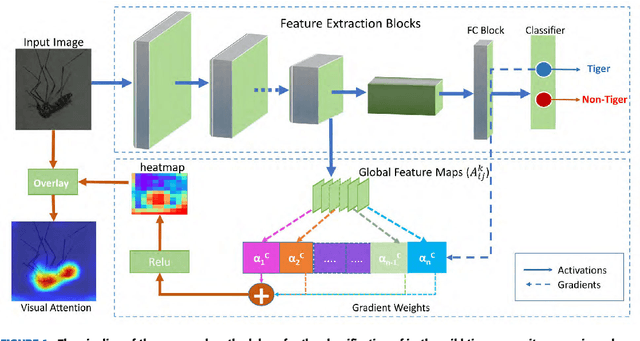
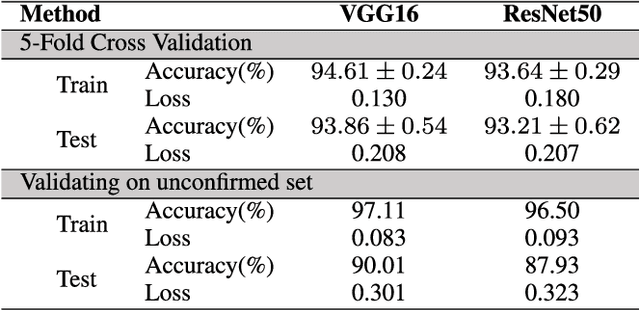
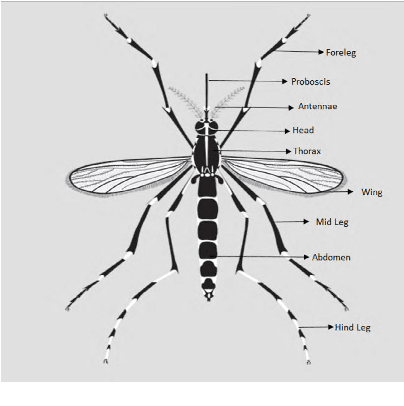
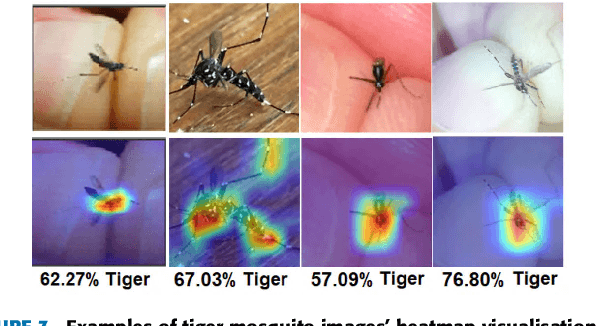
Abstract:Monitoring the spread of disease-carrying mosquitoes is a first and necessary step to control severe diseases such as dengue, chikungunya, Zika or yellow fever. Previous citizen science projects have been able to obtain large image datasets with linked geo-tracking information. As the number of international collaborators grows, the manual annotation by expert entomologists of the large amount of data gathered by these users becomes too time demanding and unscalable, posing a strong need for automated classification of mosquito species from images. We introduce the application of two Deep Convolutional Neural Networks in a comparative study to automate this classification task. We use the transfer learning principle to train two state-of-the-art architectures on the data provided by the Mosquito Alert project, obtaining testing accuracy of 94%. In addition, we applied explainable models based on the Grad-CAM algorithm to visualise the most discriminant regions of the classified images, which coincide with the white band stripes located at the legs, abdomen, and thorax of mosquitoes of the Aedes albopictus species. The model allows us to further analyse the classification errors. Visual Grad-CAM models show that they are linked to poor acquisition conditions and strong image occlusions.
On the use of uncertainty in classifying Aedes Albopictus mosquitoes
Oct 29, 2021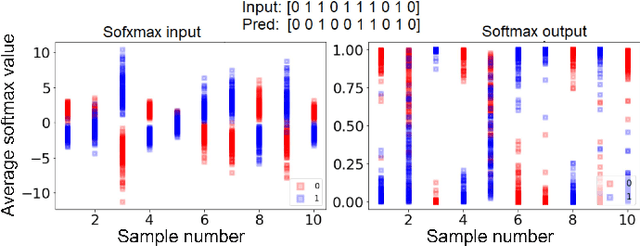
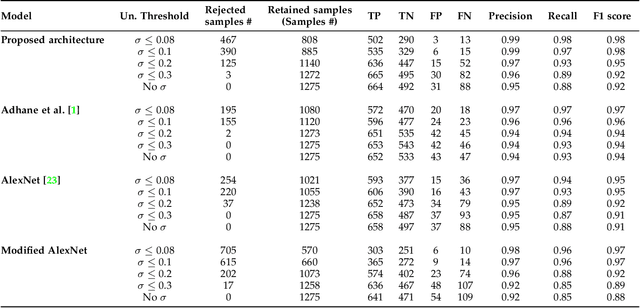
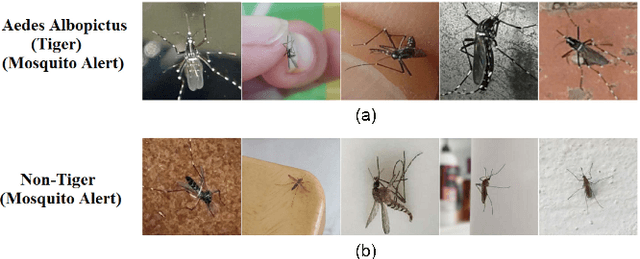

Abstract:The re-emergence of mosquito-borne diseases (MBDs), which kill hundreds of thousands of people each year, has been attributed to increased human population, migration, and environmental changes. Convolutional neural networks (CNNs) have been used by several studies to recognise mosquitoes in images provided by projects such as Mosquito Alert to assist entomologists in identifying, monitoring, and managing MBD. Nonetheless, utilising CNNs to automatically label input samples could involve incorrect predictions, which may mislead future epidemiological studies. Furthermore, CNNs require large numbers of manually annotated data. In order to address the mentioned issues, this paper proposes using the Monte Carlo Dropout method to estimate the uncertainty scores in order to rank the classified samples to reduce the need for human supervision in recognising Aedes albopictus mosquitoes. The estimated uncertainty was also used in an active learning framework, where just a portion of the data from large training sets was manually labelled. The experimental results show that the proposed classification method with rejection outperforms the competing methods by improving overall performance and reducing entomologist annotation workload. We also provide explainable visualisations of the different regions that contribute to a set of samples' uncertainty assessment.
 Add to Chrome
Add to Chrome Add to Firefox
Add to Firefox Add to Edge
Add to Edge